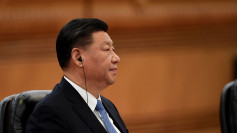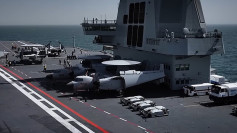NATO member states agreed Sunday to adopt a significant increase in defense spending-up to 5% of GDP-under pressure from U.S. President Donald Trump. But the alliance's unity fractured almost immediately as Spanish Prime Minister Pedro Sanchez publicly rejected the target just days ahead of a pivotal summit in The Hague.
The new target, which breaks down into 3.5% for core defense spending and an additional 1.5% for security-related infrastructure such as cyber capabilities and military logistics, marks the most ambitious increase in NATO's 77-year history. Trump, who is attending a NATO summit for the first time since 2019, has long demanded European allies shoulder more of the alliance's financial burden.
Spain ”has to pay what everybody else has to pay," Trump said Friday, accusing Madrid of being "notorious" for its low military expenditures.
Spain spent just 1.24% of GDP on defense in 2024-about €17.2 billion ($19.8 billion)-making it the lowest contributor in the alliance as a share of GDP. Despite the agreement among diplomats on a compromise text over the weekend, Sanchez said his government would not comply with the 5% target, arguing that the nation would meet its military commitments by spending only 2.1%.
"We fully respect the legitimate desire of other countries to increase their defence investment, but we are not going to do so," Sanchez said in a televised address. He added that increasing to 5% would force Spain to make "drastic cuts on social spending" or raise taxes.
Diplomats said NATO's final summit declaration softens the language to "allies commit," allowing Spain some latitude. A letter from NATO Secretary General Mark Rutte to Sanchez, seen by Reuters, stated Spain would have "flexibility to determine its own sovereign path" in meeting capability targets.
The summit, set for June 24-25 in The Hague, comes amid heightened global security concerns, including Russia's war in Ukraine and instability in the Middle East. NATO officials argue that higher defense outlays are essential for Europe to assume more security responsibility as the U.S. pivots military focus toward China.
Trump's stance has gained traction among some allies. U.S. Defense Secretary Pete Hegseth said earlier this month that "5% will happen." Rutte echoed that sentiment, urging governments to commit to the timeline. While the original deadline was 2032, the final draft reportedly pushes the target date to 2035, with a mid-term review in 2029.
Still, skepticism remains. Canada, Spain, and Italy have yet to reach the older 2% goal set in 2014, and only 23 of NATO's 32 members currently meet that benchmark. Countries like Poland, Estonia, Latvia, Greece, and the U.S. have surpassed it, but key economies such as Canada, Spain, and Italy continue to lag.
Kurt Volker, former U.S. ambassador to NATO and a fellow at the Center for European Policy Analysis, warned of discrepancies in how member states interpret the target. "Some of the messaging... is, 'Yeah, 5% but it's really 3.5% and 1.5%, and that can be pretty much anything,'" Volker said during a CEPA briefing. "You're going to have a clash with the U.S."
The defense industry is also watching closely. Micael Johansson, CEO of Swedish defense contractor Saab, said: "If we go for 3.5% [of pure defense spending] across the European part of NATO, that will mean a lot, and more will be needed in terms of capacity."
With 5,000 companies in its global supply chain, Leonardo faces operational pressure to prepare for long-term contracts. "You have to protect the supply chain," Cingolani said. "But of course, we also have to face a shortage of raw materials ... There is no no simple solution. If there were a solution, we would have done it already."





